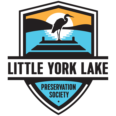Herbicide FAQ
The following are questions and answers regarding the planned herbicide treatment. We'll be updating this often, so check back for new information.
We are planning on continuing our battle with
milfoil and
starry stonewort. We've also identified
curly-leaved pondweed as a third invasive to pursue. We believe that, in the near term, these three invasive species have had the major impact on lake usability.
Due to differences in the growing seasons for each species, pondweed will be treated in May, milfoil in June and starry stonewort in July. The specific treatment dates will be announced on the website and by USPS postcards.
Volunteers surveyed the lake in the fall of 2020 to see where the target species were growing and developed a potential treatment map. This map was submitted to DEC with our application for treatment permits in February. DEC approved the majority of the submitted map.
Now, as we approach actual treatment dates, volunteers are again surveying the lake in the permitted areas to determine how much of those areas warrant treatment. We will adjust the map within the permitted areas to optimize the treatment.
We have asked all lake owners to donate to the treatment fund. Everyone benefits from the reduced incidence of weeds in the lake even if you rarely go into the water. The reduction in milfoil "litter" has been dramatic.
We have also negotiated our annual contribution from the county Soil and Water Conservation District to support our efforts.
We continue to raise money from the general public to support our ongoing efforts.
No. These are DEC listed treatments and subject to rigorous federal testing.
The Department of Environmental Conservation.
No. However, we feel that we ARE getting the milfoil under control in the areas used for recreation. This may allow us to manage milfoil with other tools in the future and reduce the amount of treatments. We have dramatically reduced the spread of the weed due to pieces traveling in the current, settling to the bottom, and re-rooting. Our target areas for this year are focused on "upstream" areas that are still seeding the lake.
Yes, many other people do use the lake. The county, through the Soil and Water Conservation District have contributed roughly 25% of the funds for our annual treatments. We are having ongoing conversations with the county on methods to provide a sustainable funding approach.
During 2015-16 we updated the original lake management plan that was developed in 1996. This plan identified our priorities and the possible tools to use to achieve those priorities. This is an ongoing project that will require years of sustained effort. You can view the
2021 work plan here or you can view the
full lake management plan here.
Have a question we didn’t cover? Submit it below and we’ll get back to you shortly.
This is an example page. It’s different from a blog post because it will stay in one place and will show up in your site navigation (in most themes). Most people start with an About page that introduces them to potential site visitors. It might say something like this:
Hi there! I’m a bike messenger by day, aspiring actor by night, and this is my website. I live in Los Angeles, have a great dog named Jack, and I like piña coladas. (And gettin’ caught in the rain.)
…or something like this:
The XYZ Doohickey Company was founded in 1971, and has been providing quality doohickeys to the public ever since. Located in Gotham City, XYZ employs over 2,000 people and does all kinds of awesome things for the Gotham community.
As a new WordPress user, you should go to your dashboard to delete this page and create new pages for your content. Have fun!

